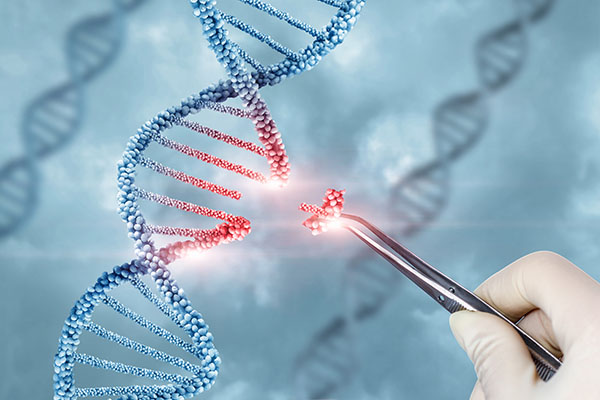
Australia taking DNA contamination of COVID vaccines seriously now
The Port Hedland council in Australia recently passed a motion recognizing "unacceptable levels of plasmid DNA contamination" in mRNA COVID vaccines. The motion, which also mandated the dissemination of this information to health practitioners and vaccine recipients, represents a significant shift in how vaccine safety concerns are addressed. Given Port Hedland's economic significance in Australia, this council's decision is likely to have far-reaching implications. For the first time, health practitioners are being formally alerted to the dangers posed by plasmid contamination — a topic that has been heavily suppressed since the #plasmidgate controversy surfaced in early 2023.Adjuvants in Gardasil vaccine may facilitate plasmids into teenagers
Compounding the controversy is a recent exposé written by investigative journalist Maryanne Demasi. The exposé reveals similar issues with the Gardasil HPV vaccine. The report highlights the FDA's awareness of residual plasmid DNA in Gardasil, a contamination concern that dates back to 2011. This is an issue that has been blacklisted from vaccine safety discussions in the media and between government regulators. This DNA contamination is made more dangerous due to the use of adjuvants in vaccines. The adjuvant is added to vaccines to enhance the immune response. One of the most common adjuvants – aluminum salts – technically act as a transfection agent, allowing foreign DNA to enter the cytoplasm of human immune cells, which then circulate throughout the body. The implications of this toxic facilitation are profound; the introduction of lab-derived plasmids into the human body poses significant risks, including the potential for cancer and other genetic diseases.Antigen levels and body weight/blood volume of vaccine recipient are important factors
COVID-19 vaccines use lipid nanoparticles which facilitate the entry of plasmid DNA into human cells. The Novavax vaccine contains a saponin adjuvant that has similar risks as the lipid nanoparticles. A Hepatitis B vaccine (Engerix-B), used in newborn babies, contains both aluminum hydroxide and polysorbate 20. These ingredients act as transfection agents, potentially facilitating plasmids into the baby and setting the stage for childhood cancer. Moreover, a greater quantity of antigen has a greater chance of introducing plasmids into human cells. Conversely, the DNA contamination could have more pronounced effects on babies with a lower blood volume and body weight. The Engerix vaccine (injected into babies) contains 20 micrograms of antigen, whereas the Gardasil HPV vaccine (injected into teenagers) contains 270 micrograms. The dosage of the antigen is important, as well as the blood volume and weight of the person being injected. The HPV vaccine contains 13 times more foreign proteins and DNA than the Hep B vaccines. Essentially, the HPV vaccines is equivalent to 13 injections of the Hep vaccine, in terms of antigen quantity. Still, the Hep B vaccine is given to infants, not teenagers, and therefore introduces a disproportionate level of contamination to a baby with lower blood volume and body weight. Both vaccines pose serious DNA contamination risks on two different ends of the exposure spectrum.All vaccines utilize a risky transfection process using adjuvants
Essential to the function of a vaccine is the term "transfection.” This process allows foreign genetic material to enter human cells — a mechanism that typically doesn’t occur naturally. Human cells possess protective barriers that prevent the uptake of foreign nucleic acids. However, laboratory techniques have been developed to bypass these defenses. The main methods of transfection include:- Mechanical Disruption: Physically puncturing the cell membrane to allow DNA entry
- Chemical Facilitation: Utilizing chemicals that mimic essential cellular components, acting like a Trojan horse to transport DNA into the cell
- Electroporation: Applying an electric field to create temporary pores in the cell membrane, though this method is less practical for widespread human use
- Polysorbate: A surfactant/emulsifier that can enhance transfection
- Metallic Cations: Elements such as aluminum, zirconium, and cerium, known for their positive charge and transfection efficiency
- Saponins: Soaps used as adjuvants in certain vaccines, promoting transfection
- Histidine: A positively charged amino acid that can aid in the transfection process
Taiwan secures agreement with U.S. to purchase 1,000 ATTACK DRONES
By Laura Harris // Share
Modifiable risk factors that increase your dementia risk and how to address them
By Olivia Cook // Share
Man with “post-COVID-19 vaccination syndrome” euthanized in Canada
By Cassie B. // Share
An invisible assault: How everyday heavy metals sabotage brain health
By willowt // Share
Pentagon warns of China's rapidly expanding nuclear arsenal
By kevinhughes // Share
FCC grounds new Chinese drones in sweeping security move
By avagrace // Share
The methylation switch: Scientists identify diet that can turn back the cellular clock
By jacobthomas // Share
Renaissance or Ruin: A wake-up call for cultural revival and self-sufficiency
By kevinhughes // Share
Weight loss in midlife may trigger brain inflammation, study finds
By avagrace // Share










